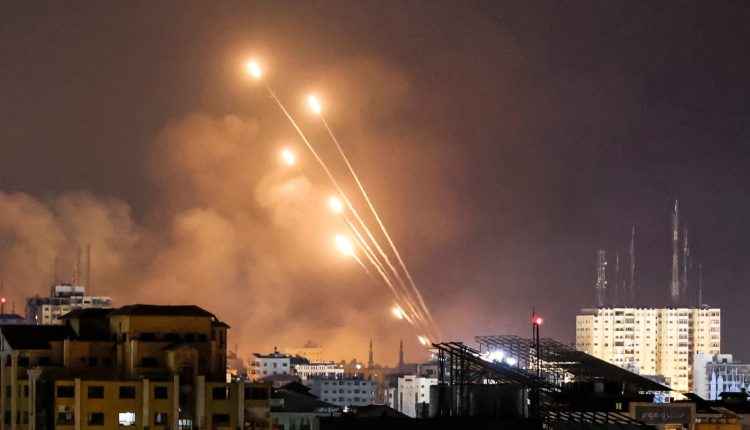Lights illuminate the processing plant at the Persian Gulf Star Co. (PGSPC) gas condensate refinery in Bandar Abbas, Iran, on Wednesday, Jan. 9. 2019.
Bloomberg | Bloomberg | Getty Images
Oil prices jumped 4% as the Israel-Hamas conflict extended into its third day following a surprise attack on Israel by Palestinian militants Hamas.
Global benchmark Brent traded 4.07% higher at $88.02 a barrel Monday, while the U.S. West Texas Intermediate futures rose 4.25% to $86.31 per barrel.
At dawn on Saturday during a major Jewish holiday, Palestinian militant group Hamas launched a multi-pronged infiltration into Israel — by land, sea and air using paragliders. The attack came hours after thousands of rockets were sent from Gaza into Israel.
At the time of publication, at least 700 Israelis have reportedly been killed, according to NBC News. The Palestinian Healthy Ministry, meanwhile, has recorded 313 deaths so far.
While there is a surge in crude prices, analysts believe it will be a knee-jerk reaction, and likely temporary.
“For this conflict to have a lasting and meaningful impact on oil markets, there must be a sustained reduction in oil supply or transport,” said Vivek Dhar, Commonwealth Bank’s director of mining and energy commodities research.
“Otherwise, and as history has shown, the positive oil price reaction tends to be temporary and easily trumped by other market forces,” he wrote in a daily note. The conflict does not directly put any major source of oil supplies in danger, he added.
A salvo of rockets is fired by Palestinian militants from Gaza City toward Israel, on October 8, 2023.
Mohammed Abed | AFP | Getty Images
Neither side is a major oil player. Israel boasts two oil refineries with a combined capacity of almost 300,000 barrels per day. According to the U.S. Energy Information Administration (EIA), the country boasts “virtually no crude oil and condensate production.” By a similar strand, the Palestinian territories produce no oil, data from EIA shows.
However, the conflict sits at the doorstep of a key oil producing and export region for global consumers.
And oil-rich Iran looms large as the market’s immediate concern.
“If western countries officially link Iranian intelligence to the Hamas attack, then Iran’s oil supply and exports face imminent downside risks,” Dhar said.
Oil exports coming out of Iran have been limited since former U.S. President Donald Trump in 2018 exited a nuclear accord and re-imposed sanctions aimed at curtailing revenue to Tehran.
“Under encouragement from the U.S. and secret nuclear talks, Iran saw its oil exports and production grow by some 600-k b/d to 3.2-m of output between end 2022 and mid-2023,” Citi said in a note.
There are concerns the conflict could spill into the region.
“There’s also a risk of the conflict escalating regionally. If Iran is sucked into it, there could also be supply issues, though we’re not at that stage yet,” Eurasia Group’s Director of Energy, Climate and Resources Henning Gloystein told CNBC in an email.
Lebanese militant group Hezbollah said it launched attacks on three sites in the Shebaa Farms — a strip of land that sits at the intersection of the Lebanese-Syrian border and the Israeli-occupied Golan Heights.
Gloystein added that the weekend’s events “have no immediate impact in oil supply.”
Read the full article here

